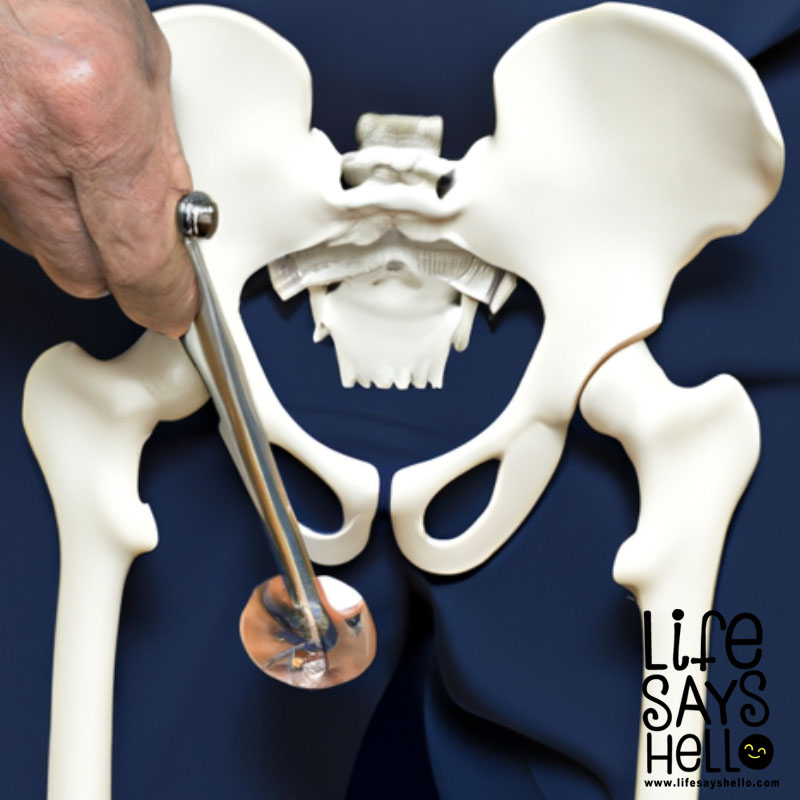What I Wish I Knew Before Hip Replacement Surgery: A Comprehensive Guide

Hip replacement surgery is a significant medical procedure that requires thorough preparation and knowledge on the part of the patient. Those who understand the procedure, risks, and recovery process, have a better chance of making quick and full recoveries.
However, without proper understanding and preparation, hip replacement surgery can be a challenging process filled with uncertainties. In this guide, we share what we wish we knew before hip replacement surgery, detailing a comprehensive overview of the procedure, recovery, risks, and ways to prepare for it.
Introduction
There are several reasons why you may need hip replacement surgery. The procedure may be recommended to you if you have persistent pain in your hip, which has not improved with other forms of treatment. Pain and inflammation caused by osteoarthritis, traumatic injury, rheumatoid arthritis, or avascular necrosis may be some of the reasons why your doctor may suggest hip replacement surgery as a possible solution.
While hip replacement surgery can be a highly successful procedure, it is invasive and requires a prolonged recovery period. This guide will walk you through what you should know before going through the procedure.
Understanding the Hip Replacement Surgery
Hip replacement surgery involves removing the damaged and painful hip joint and replacing it with an artificial joint. The artificial joint is commonly made of metal or ceramic and the replacement parts may be cemented to the existing bone or uncemented. The procedure may last anywhere between 1 to 3 hours, based on various individual factors.
Following are the steps involved in hip replacement surgery:
Step 1: Pre-Anesthesia
Before the procedure, you will be administered anesthesia to ensure you don’t feel any pain during surgery. Your anesthesiologist will discuss the best anesthesia option based on your age, health condition, and personal preference.
Step 2: Initial Incision
Once you’re sedated, the surgeon will make an incision on your hip’s outer side. The incision length may vary but is usually between 4-10 inches long.
Step 3: Damaged Tissue Removal
The surgeon will then move the muscles and remove the damaged hip joint before replacing it with the artificial joint.
Step 4: Reattaching Muscles and Closing the Incision
After the successful replacement of the joint, the surgeon will reattach the muscles, close the incision with surgical staples, stitches, or adhesive tapes.
Recovery: What to Expect
Hip replacement surgery can be a pain-ridden and strenuous journey, but it’s crucial to approach it with a positive mindset to ensure a successful recovery. Here are some things to expect during your recovery:
Length of Recovery Period
The recovery period may vary from one patient to another. Usually, it takes about 6-12 weeks to walk without a cane or crutches. However, getting back to normal may take up to 6 months or more.
Activities to Avoid
During the recovery period, you must avoid certain activities such as jumping, running, or lifting heavy objects, as it could cause stress on the replacement joint.
Physical Therapy After Surgery
A physical therapist will work with you to help you regain your stability, strength, and range of motion. The therapist may suggest exercises to help you reach your recovery goals.
Risks of Hip Replacement Surgery
Just like any other medical treatment, hip replacement surgery has certain potential risks and complications. Some of these risks may include:
- Infection
- Blood clots
- Dislocation of the hip joint
- Loosening of the artificial joint
- Injury to nerves and blood vessels
It’s essential to discuss and understand these potential risks with your doctor to ensure adequate preparation and recovery.
Preparing for Hip Replacement Surgery
Here are some steps you can follow to prepare for hip replacement surgery:
Step 1: Discuss Your Medical History
It’s essential to discuss your medical history, including previous surgeries and current medication, with your doctor before the procedure. Your doctor may review your medications and recommend specific modifications to your current drug regimen.
Step 2: Discuss Anesthesia with Your Anesthesiologist
Discuss your health status and preferences with your Anesthesiologist before your surgery to determine the most appropriate anesthesia option.
Step 3: Plan Your Rehab and Recovery
Speak with a physical therapist to understand the recovery regimen and prepare for the rehabilitation process.
Step 4: Prepare Your Home
The home must be prepared to ensure that you have a comfortable and safe recovery environment. Make sure your home is clutter-free to reduce the risk of falls and accidents.
Conclusion
Hip replacement surgery can be a scary and challenging process, but adequate preparation and understanding can ensure a successful outcome. By discussing medical history, medication, and anesthesia options with your healthcare team, you can help minimize any potential risks.
Additionally, it’s essential to follow a physical therapist’s recommendations for rehabilitation and recovery rigorously. Following the guidelines mentioned in this article can help ensure a smoother, quicker, and less painful recovery.




Comments